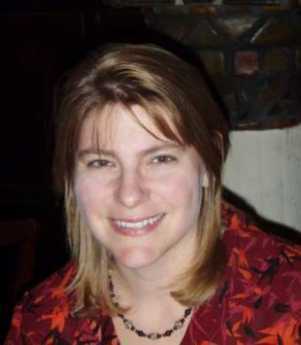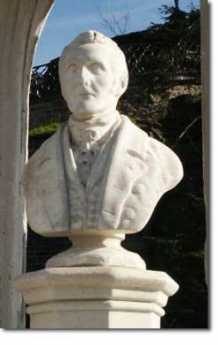Related Topics
City Hall to Chestnut Hill
There are lots of ways to go from City Hall to Chestnut Hill, including the train from Suburban Station, or from 11th and Market. This tour imagines your driving your car out the Ben Franklin Parkway to Kelly Drive, and then up the Wissahickon.
Waterworks

|
| Justina Barrett |
Even to those folks who've been to the Water Works in Philadelphia, it may come as a surprise to hear that, in the late 1800s, this neo-classical gem sitting on the Schuylkill River behind the Philadelphia Museum of Art was the second most-visited attraction to out-of-towners in the whole U.S., second only to Niagara Falls. Justina Barrett of the education department of the art museum was an endless source of historical information for the Right Angle Club luncheon attendees yesterday in her engaging talk of the history of one of my favorite places in town.
Back at the end of the 1700s Philadelphia's source of water was primarily the Schuylkill River which was then a pristine stream whose water was clear and refreshing. In spite of this an epidemic of yellow fever swept through the city in 1799 and wiped out a quarter of the city. It wasn't the river itself that was at fault. At the time the water supply facility was located where City Hall presently sits. Water was pumped to a reservoir nearby and this was the source of pollution. Not only was the reservoir unclean, but it was also tiny, having a reserve of just 25 minutes at the rate of use. This wake-up call was answered with plans for an entirely new facility right on the Schuylkill using all the latest technology of the time (did they have "technology" back then?). Besides being convenient to the source of water, a new reservoir alongside was remote from the sources of pollution of the city, which extended only to about the area of present-day 13th street.

|
| Frederick Graff |
The new facility, designed by Frederick Graff and John David, was begun in 1819 and consisted of just the building that now houses the restaurant. Originally steam engines were used to pump the water into the three million gallon reservoir but these were eventually replaced using the water of the river itself for power. A 1204' dam was built across the river to direct the flow to three water wheels which ran the pumps. Along with this improvement further construction was needed which resulted in all the buildings we have today. The dam also opened up the river to recreation and industry - seems that we always must take the good with the bad.
Since the post-dam river was such a great source of power, transportation, and water for industry, several firms began operation not far upstream from the Water Works. The concomitant pollution was a source of worry and the city founded Fairmount Park to prevent the industry from operating in the area and thereby keep the river clean. So, because of Philadelphia's forward-thinking leaders of the early 1800s we now we have a lovely Greek Revival series of buildings on the river, a matching Greek Revival art museum that ranks with the best of the best, and the largest park in the world wholly contained within a city. Not only that, the Water Works has spawned many other developments such as jewelry and China-ware with reproductions of this wonderful sight. Back in the olden days, both the Schuylkill and Delaware rivers froze solid during the winter and with the ease of access and slower flowing water because of the dam across the Schuylkill the business of harvesting ice also became quite profitable. This, in turn, led to something that many Phillies and Eagles fans of today can relate to. Beer. Lager style brewing needs cool temperatures. With ice being easily available German immigrants began making lagers locally which led to the robust and diverse brewing industry we have in the area today. All this because of the need for a better water supply.
Originally published: Tuesday, September 22, 2009; most-recently modified: Friday, May 31, 2019